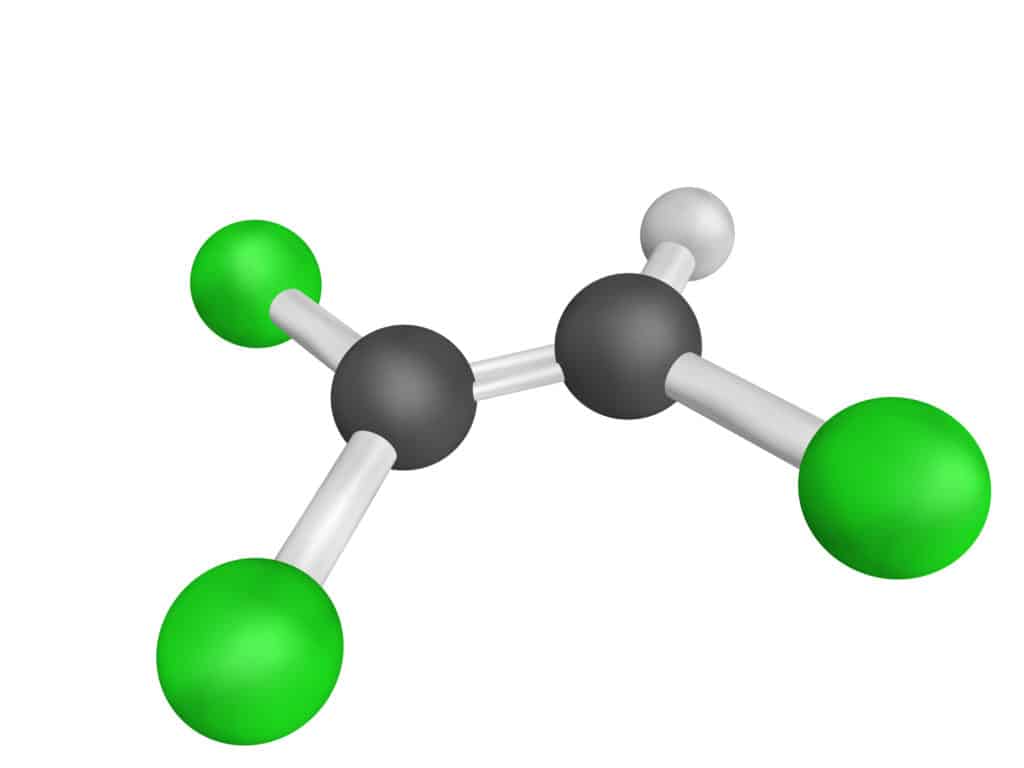
Trichloroethylene (TCE) is a non-flammable liquid clorinated hydrocarbon used as an industrial solvent for its degreasing properties. It’s commonly used in dry cleaning as well. Surprisingly enough, given what we now know, it was used topically on humans as a disinfectant and anesthetic and even incorporated into coffee as a spice. The FDA banned these uses in 1977 after the toxicity to humans and wildlife of TCE was determined. Businesses quite commonly continued to use trichloroethylene as a solvent, though. For this reason it’s found in in the environment in indoor and outdoor air and drinking and surface water.
In May of 2013, the Journal of the National Cancer Institute published a study showing possible links between trichloroethylene and liver cancer and called for more research. Previous studies have shown a link between TCE and cancers of the kidney, cervix, liver and biliary passages as well as other types of cancer including non-Hodgkin lymphoma. Unfortunately, buried waste from industrial uses has leaked into the ground water, placing the general population at risk for higher exposure to TCE. It’s found at Superfund sites throughout the country.
These kinds of complications from chemical solvent use underline the need for more environmentally friendly cleaning processes, either using safer chemicals or other cleaning methods such as aqueous cleaning technology. Water-based or more environmentally friendly solvents reduce the risks of employee and environmental exposure to toxins without compromising the benefits of solvents. Many companies have found that replacing TCE with aqueous parts cleaning technology can be safer and less expensive.
AEC Systems is committed to providing companies with environmentally safe parts cleaning technology and working towards ever more stringent goals of zero waste production. Clean should also mean safe – for parts and for people.
